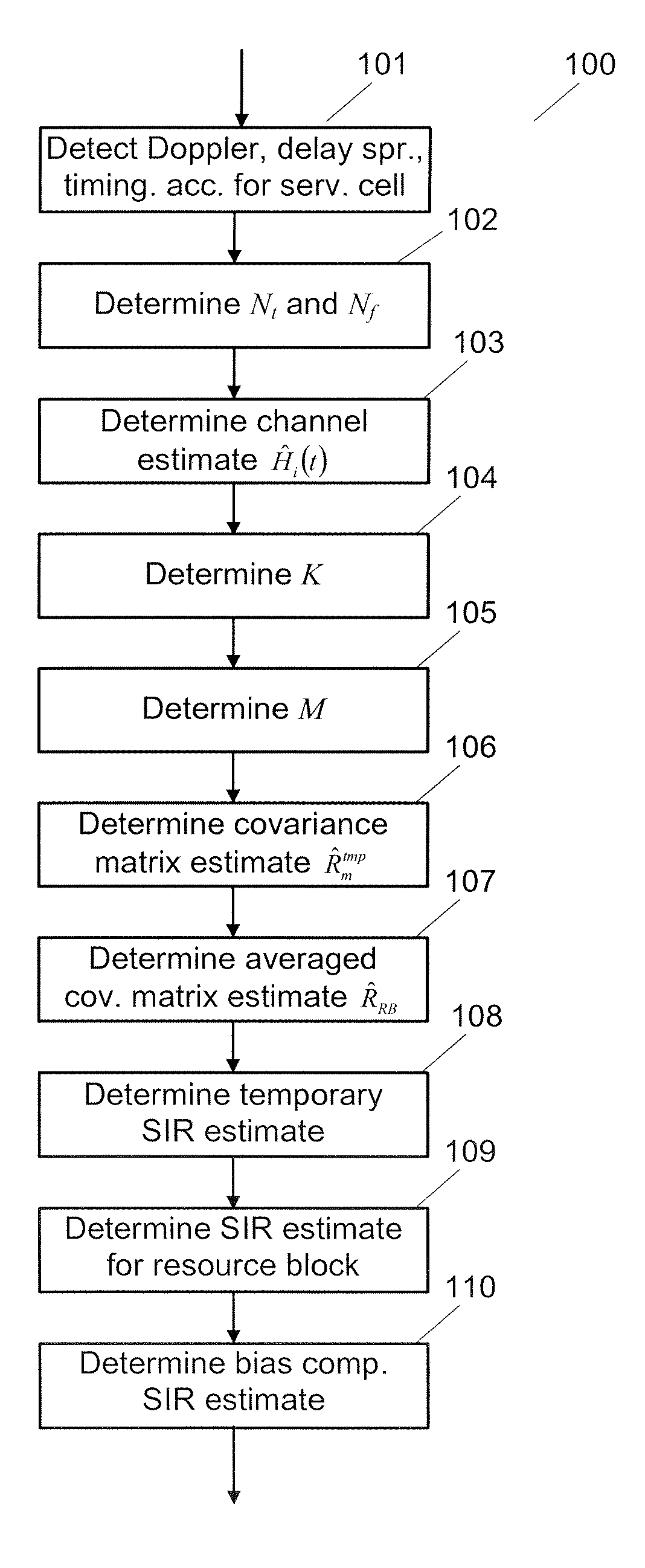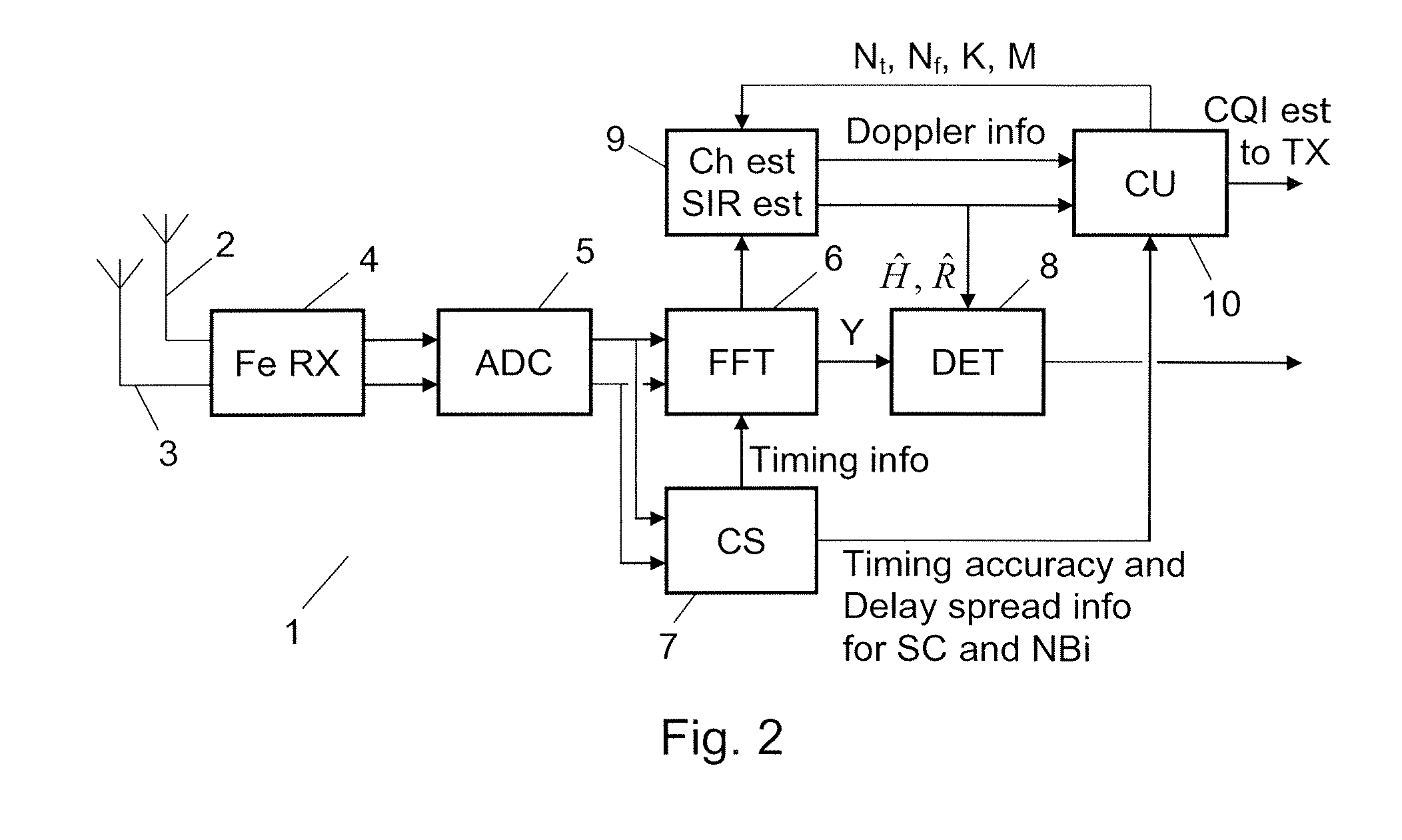Estimating a signal-to-interference ratio in a receiver of a wireless communications system
a wireless communication system and signal-to-interference ratio technology, applied in the field of wireless communication system signal-to-interference ratio estimation, can solve the problems of two-fold cost of transmitting cqi pilots, difficult to achieve in practice, and large gain, so as to improve the throughput and capacity of the system, the effect of optimizing the estimation performan
- Summary
- Abstract
- Description
- Claims
- Application Information
AI Technical Summary
Benefits of technology
Problems solved by technology
Method used
Image
Examples
Embodiment Construction
[0032]In Orthogonal Frequency Division Multiplexing (OFDM) systems a multi carrier approach, in which an original data stream to be transmitted from a transmitter to a receiver is multiplexed into a number of parallel data streams with a correspondingly low symbol rate, is used to reduce inter symbol interference (ISI) by reducing the symbol rate without reducing the data rate. The inter symbol interference is caused by delay spread of the channel impulse response for the multipath channel over which the signals are transmitted. Each of the parallel data streams is modulated with a different sub-carrier frequency and the resulting signals are transmitted together in the same band from a transmitter to a receiver. Typically, a high number of different sub-carrier frequencies, i.e. several hundreds or even thousands, will be used, and these frequencies will be very close to each other. In the receiver a Fast Fourier Transform (FFT) is used for separating the parallel data streams and ...
PUM
 Login to View More
Login to View More Abstract
Description
Claims
Application Information
 Login to View More
Login to View More - R&D
- Intellectual Property
- Life Sciences
- Materials
- Tech Scout
- Unparalleled Data Quality
- Higher Quality Content
- 60% Fewer Hallucinations
Browse by: Latest US Patents, China's latest patents, Technical Efficacy Thesaurus, Application Domain, Technology Topic, Popular Technical Reports.
© 2025 PatSnap. All rights reserved.Legal|Privacy policy|Modern Slavery Act Transparency Statement|Sitemap|About US| Contact US: help@patsnap.com



